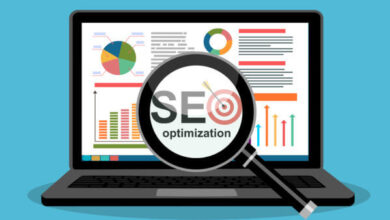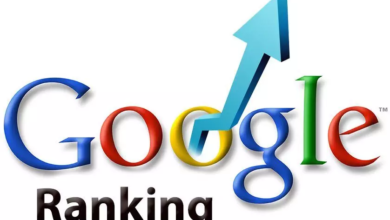Boost Web Visibility: Mastering Crawlability

“In today’s digital age, having a website is only the beginning. Making sure it’s discoverable and gaining recognition is the real challenge. This article explores the often-overlooked concept of crawlability and its crucial role in your website’s path to online success. We will delve into what crawlability means, why it’s important, and how it supports effective online visibility strategies.”
Table of Contents
What is crawlability?
Crawlability is the capacity of search engine bots or crawlers to access, traverse, and index the content on your website. Think of it as providing these digital explorers with a well-lit path through the labyrinth of your website. Without proper crawlability, your website might as well be a hidden treasure chest buried deep in the digital ocean.
Why is crawlability important?
Crawlability forms the foundation of online visibility. If search engine crawlers can navigate your website efficiently, your content may remain visible to potential visitors. All your creative and informative content, regardless of its quality, becomes inaccessible, limiting its impact.
How does crawlability affect?
Crawlability acts as the gateway to success. It determines whether search engines can discover and interpret your content. A poorly crawlable website essentially hides its content from search engines, making it impossible to achieve high rankings on search engine result pages. In essence, crawlability is the driving force behind SEO Malaysia success.
How Crawlers Work
What are web crawlers?
Web crawlers, also known as bots or spiders, are automated programs used by search engines to explore the internet. Their mission is to navigate the digital landscape by follow links and gathering data about web pages. They are the tireless workers responsible for collecting and organizing information in Google search console databases.
How do crawlers crawl websites?
When web crawlers land on a webpage, they execute a meticulous analysis of its content. They scrutinize text, images, links, and underlying code, assessing the quality, relevance, and structure of the content. The data collected guides search engines in ranking the page in response to user queries.
What factors affect crawlability?
Several factors can influence a website’s crawlability, including:
- Site Architecture and Structure: A logically organized website with clear hierarchies and navigation facilitates crawler movement and comprehension of relationships between pages.
- Robots.txt File: This file instructs crawlers on which parts of your site to crawl and which to avoid. Misconfigurations can lead to inadvertent crawlability issues.
- XML Sitemaps: xml sitemap provides a roadmap for crawlers, helping them discover and index content efficiently.
- Internal Linking: Strategic internal links not only enhance user experience but also guide crawlers and distribute link equity.
- Page Speed and Performance: Websites with faster loading times are favored by crawlers as they can index content more efficiently.
- Mobile-Friendliness: In an era of mobile dominance, mobile-responsive design is a must. Search engines prioritize mobile-friendly sites.
Common Crawlability Issues
1. Robots.txt File Errors:
The robots.txt file, while crucial for controlling crawler access, can sometimes lead to crawlability issues if not configured correctly. Errors or misconfigurations in this file can inadvertently block search engine crawlers from accessing important pages. It’s important to regularly review and update your robots.txt file to ensure it accurately reflects your site’s structure and requirements.
2. Broken Links:
Broken links within your website can act as roadblocks for crawlers. When search engine bots encounter broken links, they cannot follow the intended path and may prematurely halt their crawl. This can result in incomplete indexing of your site, which, in turn, affects your efforts. Regularly checking for and fixing broken links is essential to maintain optimal crawlability.
3. Orphan Pages:
Orphan pages are those that are not linked to any other pages on your website. These pages can become invisible to crawlers if they are not accessible through navigation or internal links. To address this issue, it’s essential to ensure that all pages, especially valuable ones, are linked to and accessible from other parts of your website. This improves the chances of these pages being discovered and indexed.
4. Slow Page Loading Speeds:
Crawlers operate within time constraints. If your website has slow-loading pages, crawlers may struggle to index your content effectively. Prolonged load times can lead to incomplete indexing, as crawlers might not wait around for sluggish pages to load. Slow-loading pages can also negatively impact user experience, which can indirectly affect your search engine’s ability to rank.
5. Duplicate Content:
Duplicate content can confuse search engine crawlers. When multiple pages on your website contain identical or very similar content, crawlers may have difficulty determining which version to prioritize for indexing. This search result in inconsistent indexing, potentially leading to lower rankings.

Alt text: robots.txt
Optimize your robots.txt file
A well-optimized robots.txt file is a crucial element in controlling the access of search engine crawlers to your website. It should be correctly configured to guide crawlers, allowing them access to essential pages while blocking unimportant or sensitive areas. To optimize this file, begin by prioritizing your website’s critical content. Review your site’s structure and identify the most crucial pages that you want search engines to crawl and index. These might include your main content pages, product listings, and important landing pages.
Additionally, ensure that your robots.txt file provides clear and precise directives to search engine crawlers. Use specific disallow rules for non-essential areas and allow rules for crucial pages. These directives should be straightforward for crawlers to follow, as this will guide them effectively to the heart of your website. Regularly review and update your robots.txt file, especially when you make changes to your website’s structure. Keeping it up-to-date ensures that crawlers always have the latest information about which pages to crawl.
2. Fix broken links
Broken links can not only frustrate users but also hinder the progress of search engines crawl Regularly checking for and fixing broken links is essential for a seamless user experience and optimal crawlability. To address this issue effectively, consider performing regular site audits using tools like broken link checkers. These audits will help you identify broken links quickly and allow you to address them promptly. Replace broken links with live and relevant ones to ensure that users and crawlers can navigate your website without encountering dead ends.
In cases where you’ve moved or removed content, it’s vital to implement proper 301 redirects. These redirects guide both users and crawlers to the new location of the content, ensuring that no valuable content goes unnoticed. By implementing these measures, you can maintain a healthy and efficient website, improving user experience and crawlability.
3. Interlink your pages effectively
Strategic internal linking is a powerful tool that enhances user experience, facilitates crawler navigation, and ensures that all relevant content is indexed. Effective internal linking begins with ensuring that linked pages are relevant to the topic and user’s intent. The content relevance factor is vital – link related pages to each other using descriptive anchor text, providing both users and crawlers with a clear understanding of where the link will take them.
Creating a hierarchical structure for your website and establishing a clear navigation system is equally important. This helps both users and crawlers find content easily. Avoid excessive linking within your content, as over-linking can confuse both users and crawlers. Instead, focus on providing meaningful links that enhance the overall user experience and improve the efficiency of search engine crawlers.
4. Improve your page loading speeds
Crawlers prefer websites that load quickly, and search engine optimization of your page loading speeds is not only vital for crawlability but also essential for providing an excellent user experience. To improve your website’s loading times, consider the following steps:
- Image Optimization: Compress and optimize images to reduce their file size without compromising quality. Smaller image files load faster, contributing to quicker page loading times.
- Content Delivery Networks (CDNs): Consider using CDNs to distribute your website’s content across various server locations. This strategy reduces the distance that data needs to travel, resulting in faster loading times for users and search engine crawlers.
- Code Optimization: Minimize code bloat by removing unnecessary code and using efficient programming practices. Lighter, cleaner code results in faster page loading times and a more efficient crawl by search engine bots.
Faster loading pages not only attract crawlers but also enhance the overall user experience, which can have a positive impact on your search engine rankings.
5. Avoid duplicate content
Duplicate content can confuse search engine crawlers and lead to inconsistent indexing, potentially lowering your search rankings. To address this issue, consider implementing the following strategies:
- Canonical Tags: Use canonical tags to specify the preferred version of a page when similar content exists on multiple URLs. This informs crawlers which version of the content to prioritize for indexing, preventing confusion and inconsistencies.
- 301 Redirects: Implement 301 redirects for duplicate or near-duplicate content. These redirects guide both users and crawlers to the desired, primary version of the content, effectively resolving the issue of duplicate content. By implementing these strategies, you can ensure that your website pages are indexed accurately, and your efforts are not compromised.
In conclusion
Crawlability is a critical aspect that should not be underestimated. Neglecting crawlability can significantly impact your website’s visibility and accessibility to your target audience. By following these best practices for improving crawlability, you can enhance your efforts and offer a better experience for both users and search engine crawlers. Crawlability is the key to ensuring that your website is not lost in the vast digital wilderness.



